Abstract
The antibacterial drug Nitroakridin 3582 inhibited the growth of selected grampositive bacteria more strongly than it inhibited the growth of gram-negative bacilli. Nitroakridin at concentrations of the order of 5 × 10−5m induced lysis of Bacillus licheniformis and Micrococcus lysodeikticus. At concentrations less than 10−4m, Nitroakridin 3582 reduced the exponential growth rate of Escherichia coli C-2; at 10−4m the drug was bacteriostatic, and, at concentrations greater than 10−4m, it was bactericidal. Prolonged bacteriostasis resulted in the formation of long filaments by E. coli, Serratia marcescens, Shigella sonnei, and Proteus mirabilis. The reversible effects of Nitroakridin 3582 on the growth of E. coli correlated with partial inhibitions of deoxyribonucleic acid biosynthesis; ribonucleic acid and protein syntheses were inhibited less strongly. Nitroakridin 3582 at concentrations greater than 2 × 10−4m, which block deoxyribonucleic acid biosynthesis, produced an accelerated bactericidal action.
Full text
PDF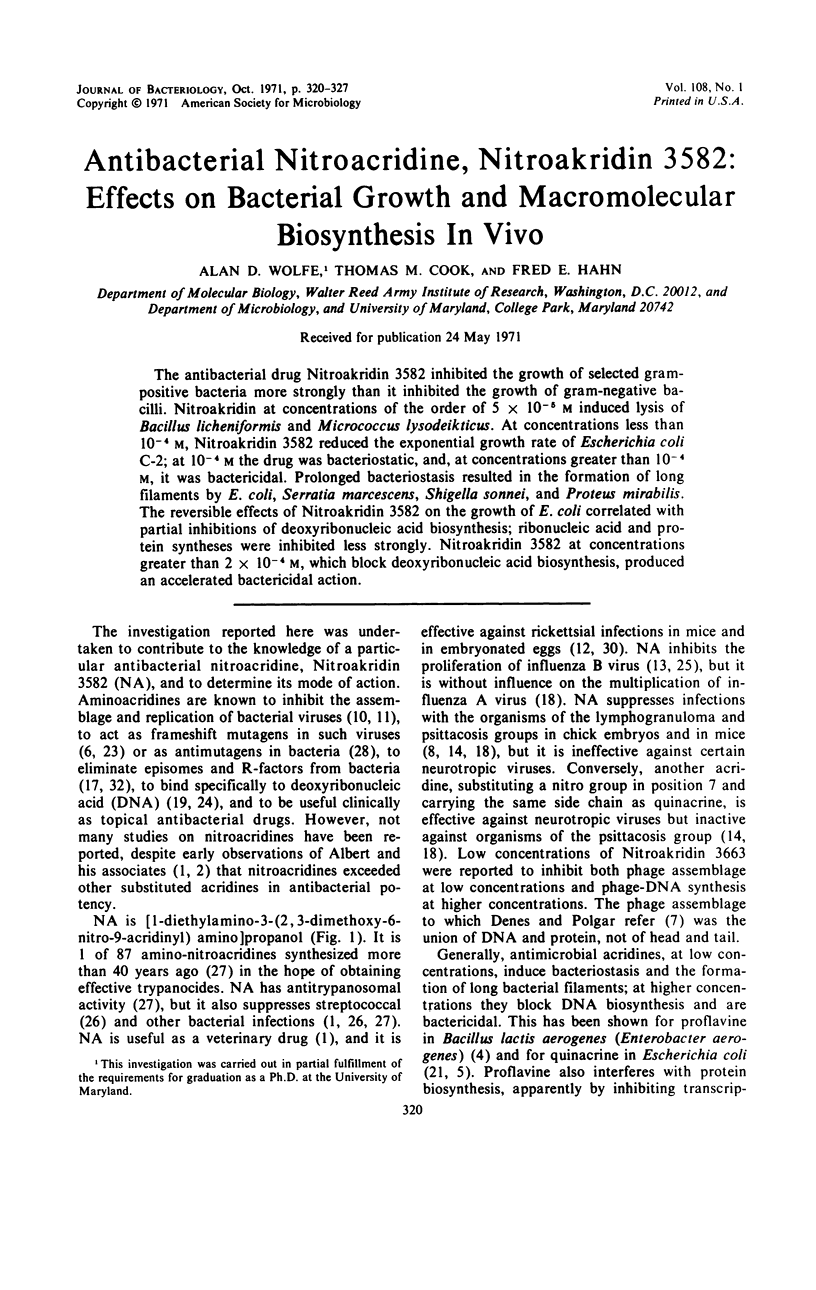
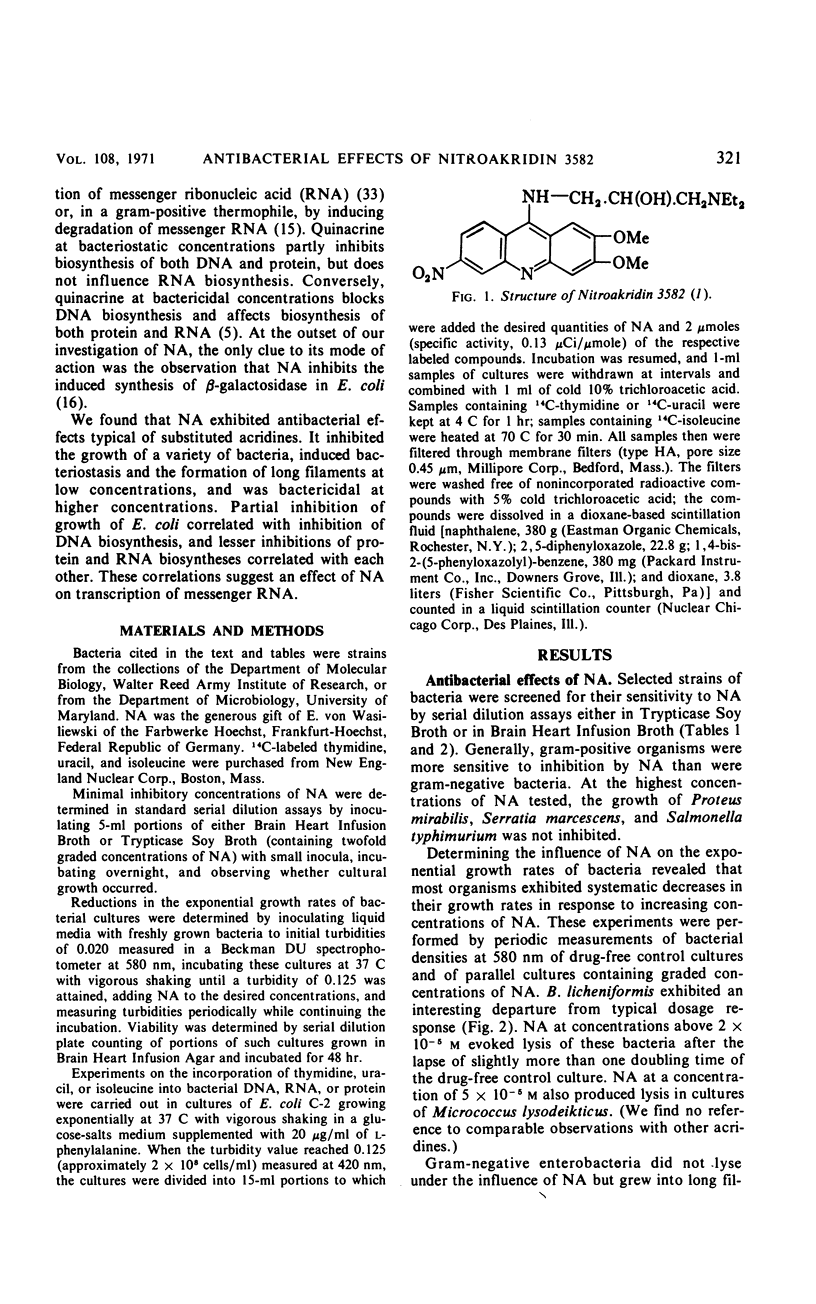
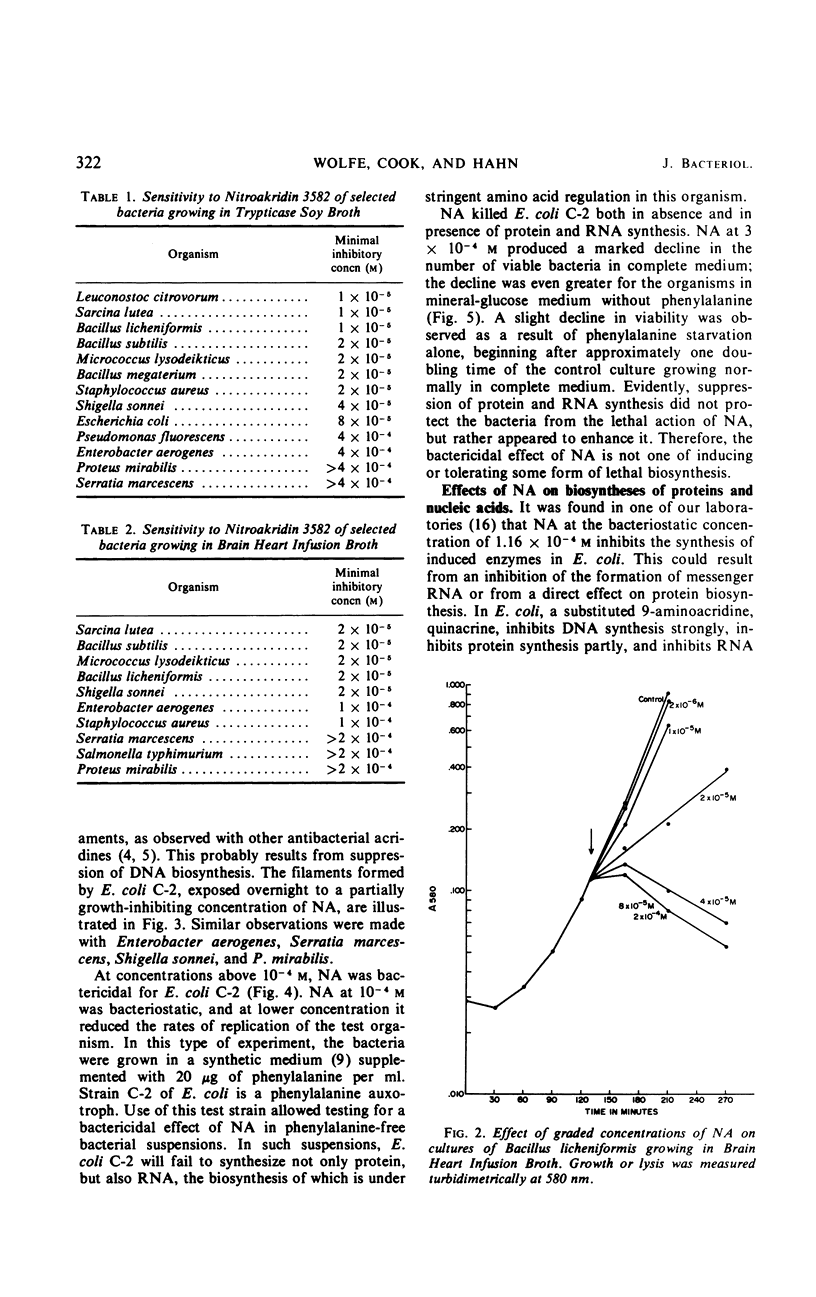
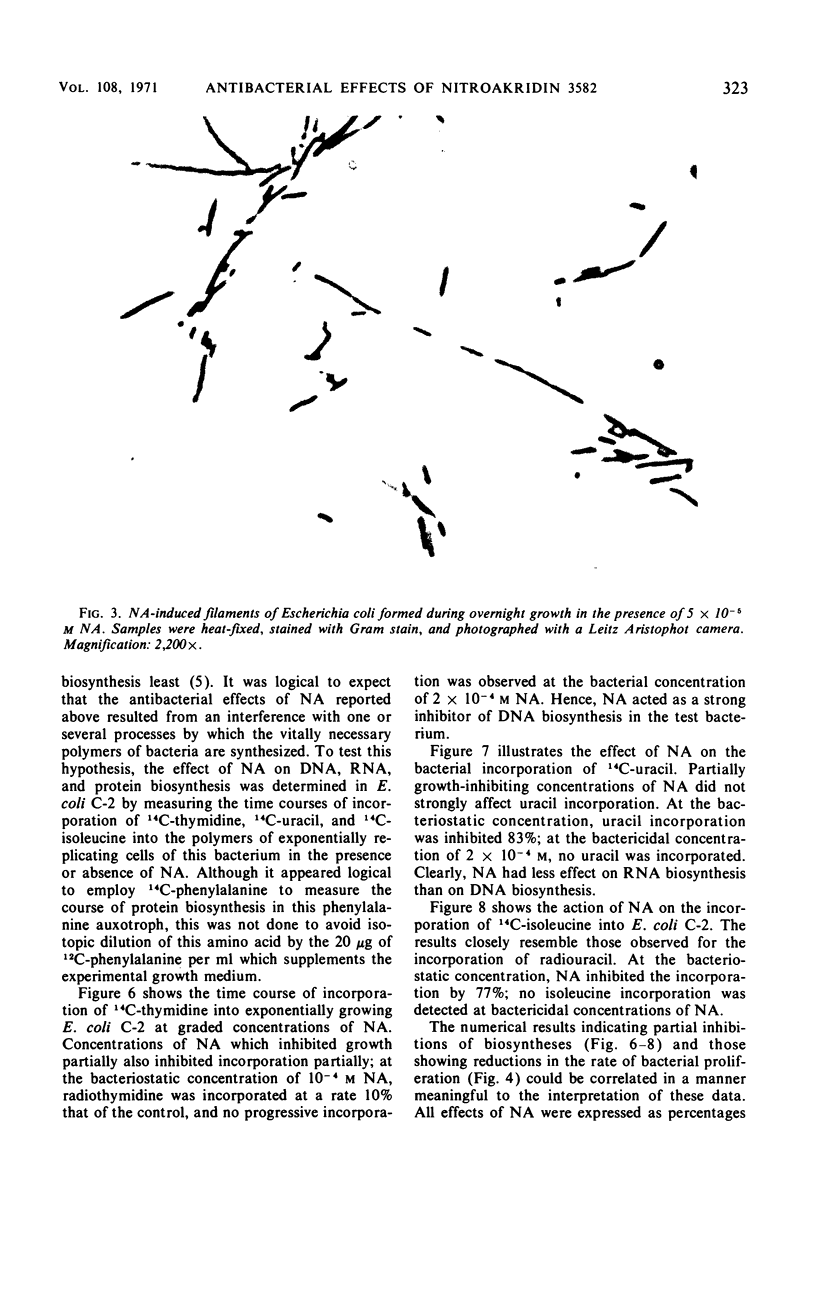
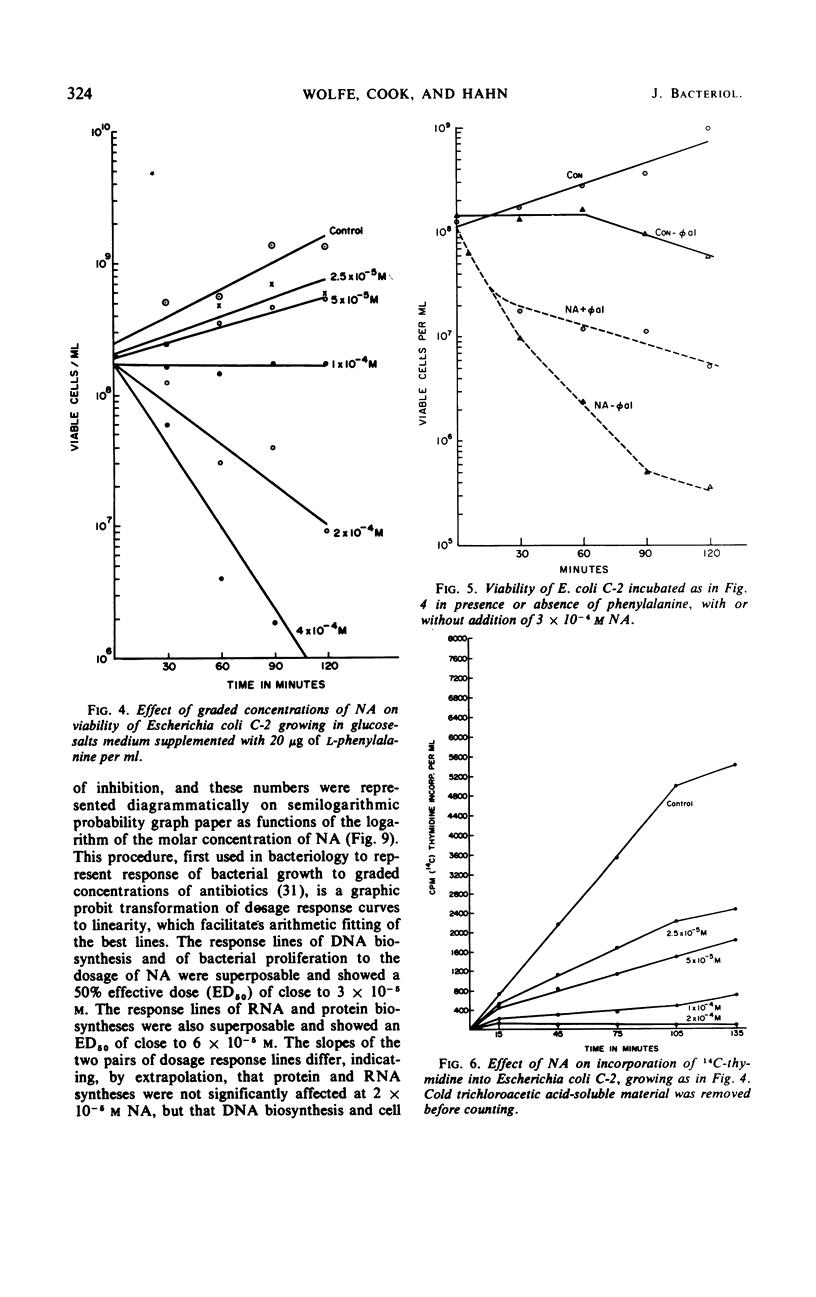

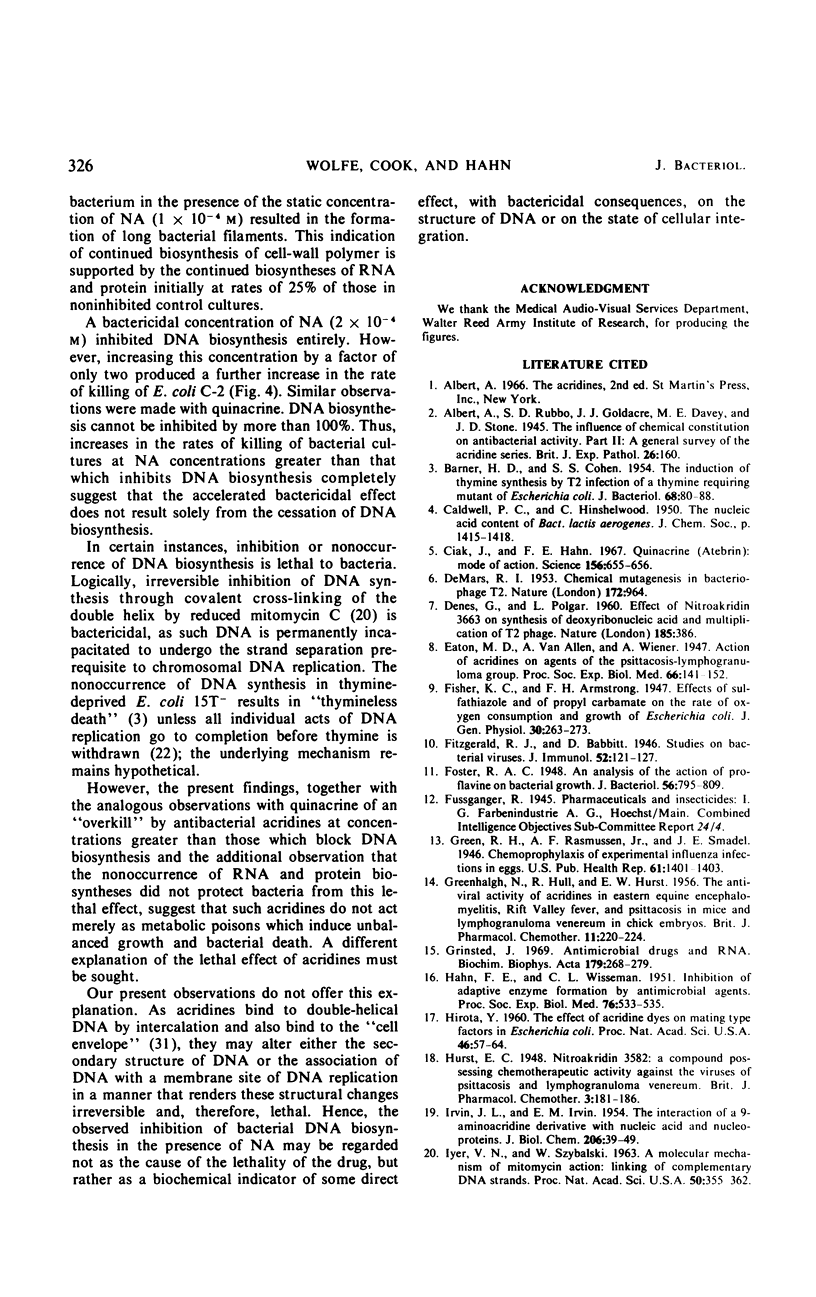
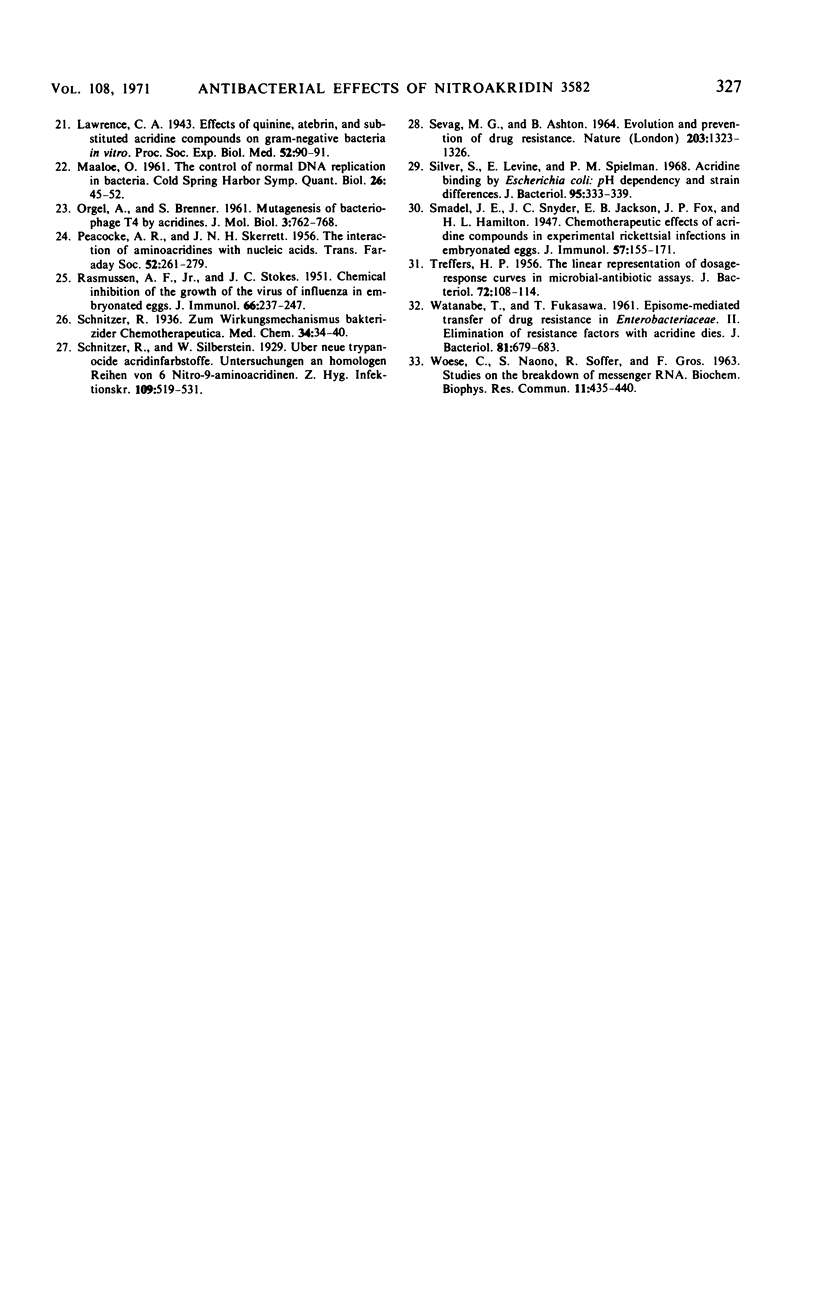
Images in this article
Selected References
These references are in PubMed. This may not be the complete list of references from this article.
- BARNER H. D., COHEN S. S. The induction of thymine synthesis by T2 infection of a thymine requiring mutant of Escherichia coli. J Bacteriol. 1954 Jul;68(1):80–88. doi: 10.1128/jb.68.1.80-88.1954. [DOI] [PMC free article] [PubMed] [Google Scholar]
- Ciak J., Hahn F. E. Quinacrine (atebrin): mode of action. Science. 1967 May 5;156(3775):655–656. doi: 10.1126/science.156.3775.655. [DOI] [PubMed] [Google Scholar]
- DEMARS R. I. Chemical mutagenesis in bacteriophage T2. Nature. 1953 Nov 21;172(4386):964–964. doi: 10.1038/172964a0. [DOI] [PubMed] [Google Scholar]
- DENES G., POLGAR L. Effect of nitroacridine 3663 on synthesis of deoxyribonucleic acid and multiplication of T2 phage. Nature. 1960 Feb 6;185:386–386. doi: 10.1038/185386a0. [DOI] [PubMed] [Google Scholar]
- Foster R. A. An Analysis of the Action of Proflavine on Bacteriophage Growth. J Bacteriol. 1948 Dec;56(6):795–809. doi: 10.1128/jb.56.6.795-809.1948. [DOI] [PMC free article] [PubMed] [Google Scholar]
- GRENNHALGH N., HULL R., HURST E. W. The antiviral activity of acridines in eastern equine encephalomyelitis, Rift Valley fever and psittacosis in mice, and lymphogranuloma venereum in chick-embryos. Br J Pharmacol Chemother. 1956 Jun;11(2):220–224. doi: 10.1111/j.1476-5381.1956.tb01057.x. [DOI] [PMC free article] [PubMed] [Google Scholar]
- Grinsted J. Anti-microbial drugs and RNA. Biochim Biophys Acta. 1969 Apr 22;179(2):268–279. doi: 10.1016/0005-2787(69)90036-7. [DOI] [PubMed] [Google Scholar]
- HAHN F. E., WISSEMAN C. L., Jr Inhibition of adaptive enzyme formation by antimicrobial agents. Proc Soc Exp Biol Med. 1951 Mar;76(3):533–535. doi: 10.3181/00379727-76-18546. [DOI] [PubMed] [Google Scholar]
- Hirota Y. THE EFFECT OF ACRIDINE DYES ON MATING TYPE FACTORS IN ESCHERICHIA COLI. Proc Natl Acad Sci U S A. 1960 Jan;46(1):57–64. doi: 10.1073/pnas.46.1.57. [DOI] [PMC free article] [PubMed] [Google Scholar]
- IRVIN J. L., IRVIN E. M. The interaction of a 9-aminoacridine derivative with nucleic acids and nucleoproteins. J Biol Chem. 1954 Jan;206(1):39–49. [PubMed] [Google Scholar]
- IYER V. N., SZYBALSKI W. A MOLECULAR MECHANISM OF MITOMYCIN ACTION: LINKING OF COMPLEMENTARY DNA STRANDS. Proc Natl Acad Sci U S A. 1963 Aug;50:355–362. doi: 10.1073/pnas.50.2.355. [DOI] [PMC free article] [PubMed] [Google Scholar]
- MAALOE O. The control of normal DNA replication in bacteria. Cold Spring Harb Symp Quant Biol. 1961;26:45–52. doi: 10.1101/sqb.1961.026.01.010. [DOI] [PubMed] [Google Scholar]
- ORGEL A., BRENNER S. Mutagenesis of bacteriophage T4 by acridines. J Mol Biol. 1961 Dec;3:762–768. doi: 10.1016/s0022-2836(61)80081-8. [DOI] [PubMed] [Google Scholar]
- RASMUSSEN A. F., Jr, STOKES J. C. Chemical inhibition of the growth of the virus of influenza in embryonated eggs. J Immunol. 1951 Feb;66(2):237–247. [PubMed] [Google Scholar]
- SEVAG M. G., ASHTON B. EVOLUTION AND PREVENTION OF DRUG-RESISTANCE. Nature. 1964 Sep 26;203:1323–1326. doi: 10.1038/2031323a0. [DOI] [PubMed] [Google Scholar]
- Silver S., Levine E., Spielman P. M. Acridine binding by Escherichia coli: pH dependency and strain differences. J Bacteriol. 1968 Feb;95(2):333–339. doi: 10.1128/jb.95.2.333-339.1968. [DOI] [PMC free article] [PubMed] [Google Scholar]
- TREFFERS H. P. The linear representation of dosage-response curves in microbial-antibiotic assays. J Bacteriol. 1956 Jul;72(1):108–114. doi: 10.1128/jb.72.1.108-114.1956. [DOI] [PMC free article] [PubMed] [Google Scholar]
- WATANABE T., FUKASAWA T. Episome-mediated transfer of drug resistance in Enterobacteriaceae. II. Elimination of resistance factors with acridine dyes. J Bacteriol. 1961 May;81:679–683. doi: 10.1128/jb.81.5.679-683.1961. [DOI] [PMC free article] [PubMed] [Google Scholar]
- WOESE C., NAONO S., SOFFER R., GROS F. Studies on the breakdown of messenger RNA. Biochem Biophys Res Commun. 1963 Jun 20;11:435–440. doi: 10.1016/0006-291x(63)90088-3. [DOI] [PubMed] [Google Scholar]



